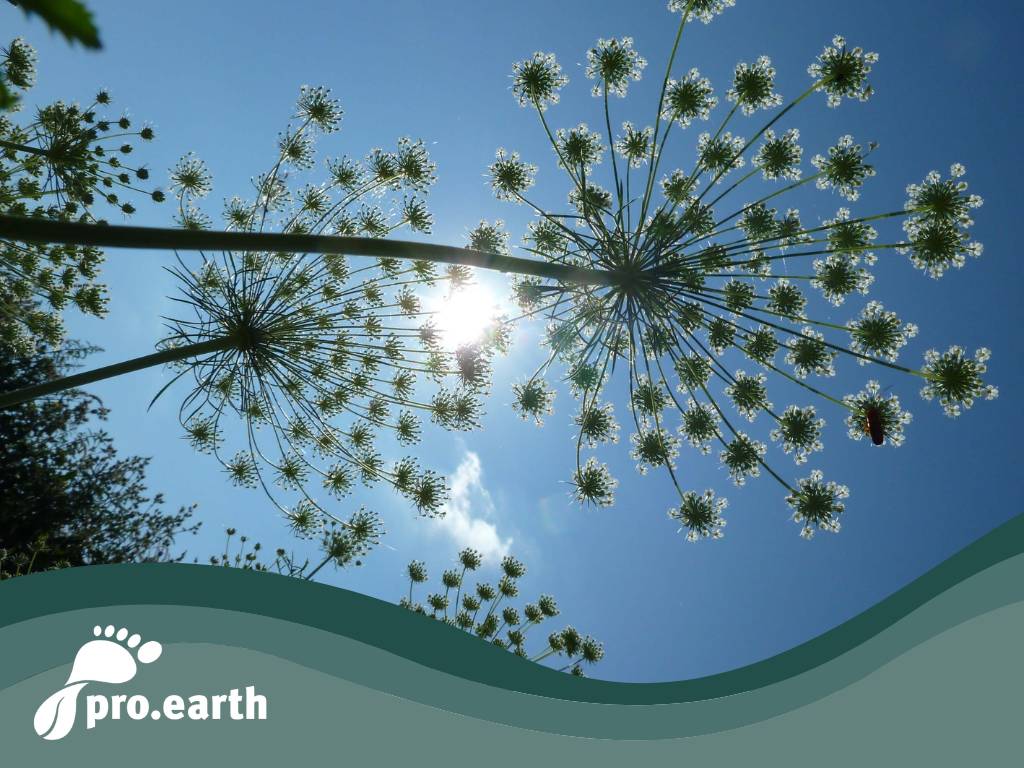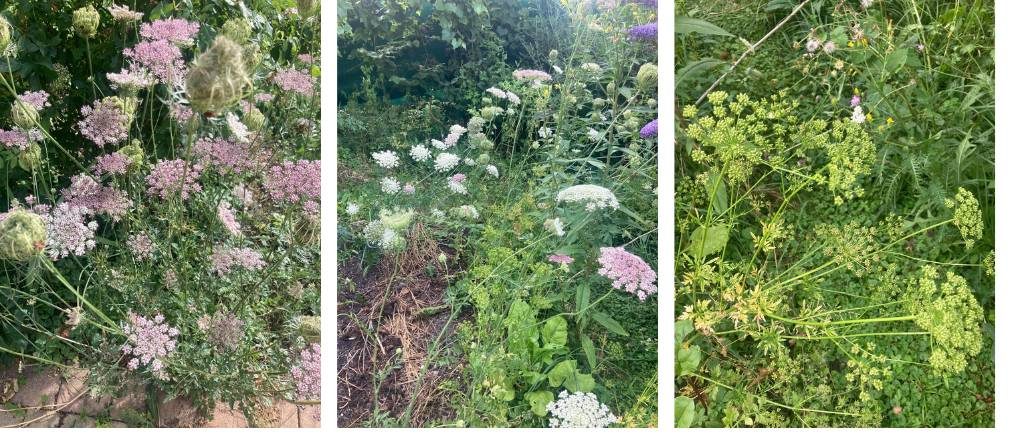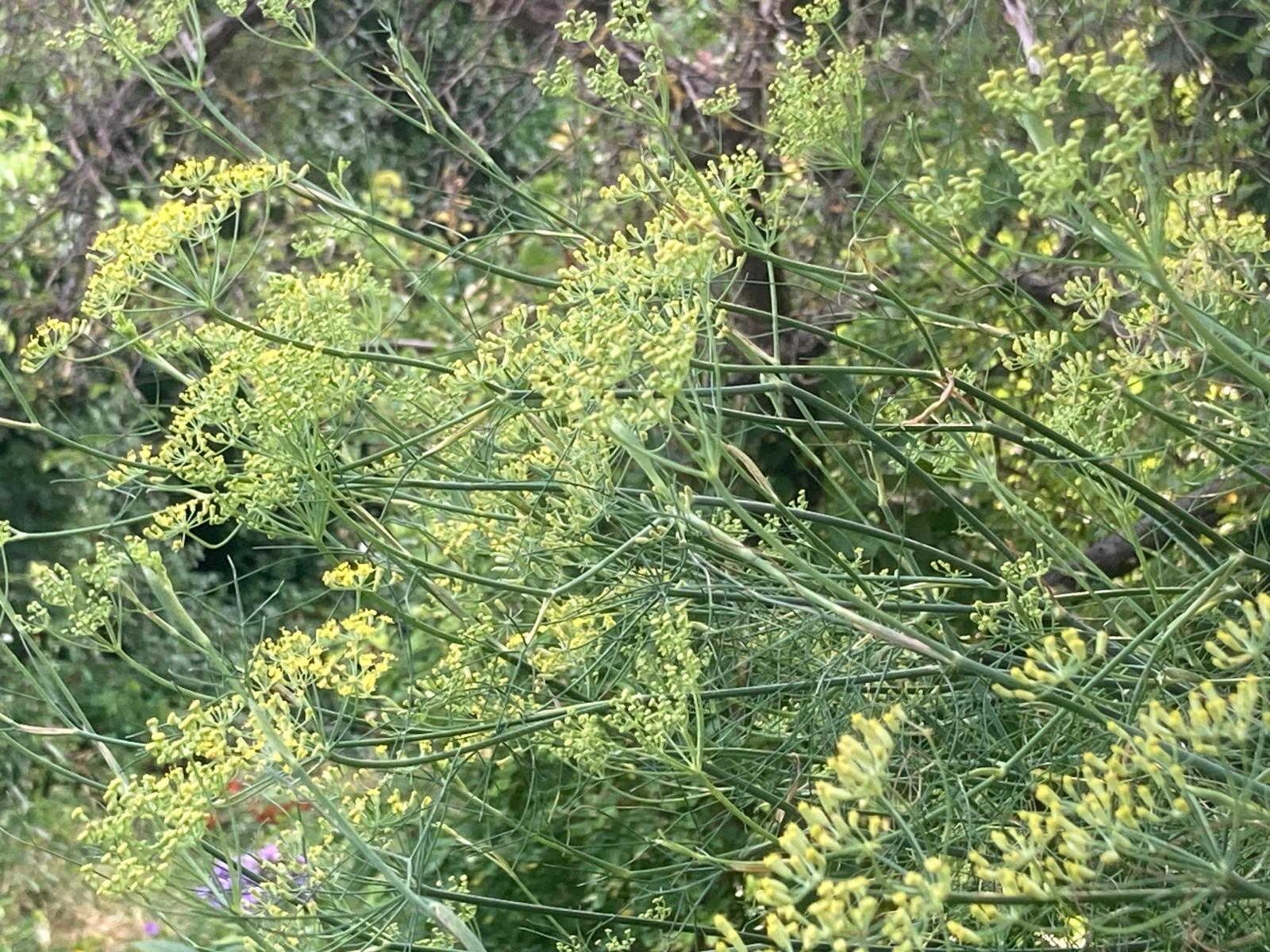The patrons of the garden

Our absolute favorite plants include the countless umbelliferous plants. And we really like them all. Even if not all of them like to grow here. Unfortunately, others do. Some have simply sown themselves wildly in the garden. And others that we deliberately planted. We love them so much because they are both very pretty and incredibly popular with insects. If you observe the flowers for a short time, you can see them constantly coming and going. They also form a wonderful contrast in herbaceous borders with their umbrellas hovering above other plants. And they also look attractive in winter.
German gardener Jörg Pfenningschmidt writes that 573 visitors were counted on a parsnip and 877 insects on a fennel in the course of one day! Incredibly wonderful, we #Beetschwestern think!
Some patrons are annual vagabonds, others stay for years and become more and more stately. In any case, no garden should be without them. Native varieties are best. Although there are also some really exciting native varieties. We have to admit. We think that as long as you offer enough native plants for the insect world, you can have foreign plants in between. We find #Beetschwestern gardens sad where there are virtually no native (wild) plants. And there are plenty of them. Cherry laurel, thujas, lawn wastelands. We stand up to them. We allow. Don't mow. We also accept messy corners. Nettles. Because that's what gives birth to life.
Brief digression .... We were recently asked by a lady how she could create more habitat for butterflies in her garden. The answer was very simple: allow a wild corner with stinging nettle. Plant native shrubs such as Purgier's buckthorn. That's all it takes. But now back to the wonderful patrons of our gardens.

Mountain fennel mixture with meadow chervil and parsley Parsley
Which garden plants belong to this group?
- Many herbs, such as
- Dille,
- Caraway seeds,
- Parsley,
- Lovage,
- Aniseed,
- Sweet umbel,
- Chervil
- Vegetables such as
- Carrot - we left it standing so that we could see the wonderful flowers in the second year .... patience is required ....
- Fennel,
- Parsnip
- Ornamental plants such as
- Bronze fennel,
- Hair strand,
- Angelica
- Starry umbel,
- Silge - this includes the world's largest umbel flower Selinum wallichianum, which originates from the Himalayas
- Cartilaginous carrot,Wild carrot
- Yarrow

Our experience
We have had good experiences with mountain fennel, which comes from the central region and turns reddish, with meadow chervil, parsley and dill. Unfortunately, we didn't like the star umbels. The native angelica and forest angelica did not survive for long either. Not every location is suitable for every plant.
We tried to contain the goutweed, which also forms pretty umbels, with angelica and to extend the flowering period of this patch - this attempt failed (as did many others). We planted catnip with the goutweed, which has survived to date because it grows just as quickly as the goutweed, but this year it is much less vigorous than in previous years.
There are some poisonous species
Some species are very poisonous, such as the notorious spotted hemlock(Conium maculatum).
But the Chinese, very pretty red angelica (Angelica gigas) is also poisonous.
Contact with giant hogweed(Heracleum mantegazzianum) is also very dangerous. You should never plant this in your garden! It has been introduced and is spreading rapidly here, but is now being intensively combated. There is, however, the very attractive meadow hogweed(Heracleum sphondylium), which is suitable for the garden.
And the flowers of dog parsley(Aethusa cynapium), which are often confused with true parsley, are also poisonous.
We #Beetschwestern wish you lots of fun with your humming garden with lots of patrons!!!






